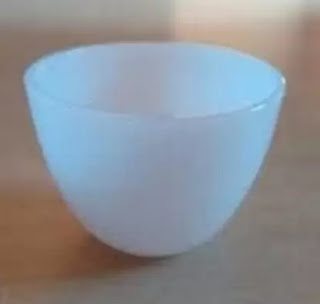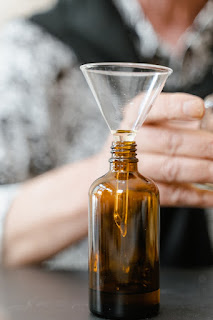Chemistry Lab Apparatus and its Applications | Chemistry Lab Equipment
Students should have a basic understanding of the proper and necessary chemistry lab apparatus from the time they begin performing basic chemical experiments in their school labs. This requirement for familiarity with various apparatus provides students with solid ground knowledge, and schools and colleges must take special care to make the students aware of these.
Let us examine and attempt to comprehend the basic apparatus used in school chemistry laboratories, as well as their specific applications when performing any chemical experiment. The safety apparatus is the first and most important apparatus that every student or member entering the chemical laboratories should be aware of. In these areas, safety protocols must be strictly followed because a small mistake or mishap can result in large casualties and severe consequences. In any laboratory, one should always wear fully covered shoes rather than sandals or slippers.
Safety goggles: Safety goggles are required in the chemistry lab. It shields the eyes from any chemical or fumes that may be released during the experiment. It also protects us from blindness in the event of an accidental splashing of chemicals or acids.
Lab Apron: A lab apron serves a similar purpose to safety goggles, with the difference being that instead of just protecting the eyes, it is used to prevent injury in the event of spills or splashes. for prevention of any injury in case of spills or splashes.
Latex gloves: These gloves are useful when handling chemicals, acids, or any solution in order to avoid direct contact with the bare hand and skin.
Beakers: Beakers are cylindrical borosilicate glass utensils with a flat bottom and an upper opening with a rim and a spout. The spout on their rims aids in proper solution pouring, and they have no covering on top. Watch glasses are commonly used to conceal their solutions. They come in various sizes and are used to hold, heat, or mix substances accurately. Although they have graduated calibrations, they are not intended for precise solution calculations, and thus other equipment is required.
Conical flasks: A conical flask, also known as an Erlenmeyer flask, is a device with a flat bottom and a long narrow neck that allows for easy mixing of the solution without spilling it out. Because the flask has a narrow long neck, it can also be used to gently heat the contents inside by gently swirling the flask. A rubber cap or cork can also be used to cover the flask. Never heat a flask with the cap on, as this will cause pressure and gas to build up inside the closed flask, resulting in explosions.
Boiling flask: A boiling flask, also known as a Florence flask, has a round bottom and a long neck. It can be capped with rubber or glass stoppers and is mostly used to hold solutions that can be easily heated with proper swirling motions for proper mixing.
Test tubes are the next most common type of apparatus. They are typically glass pipes with a circular opening on one side and a rounded bottom on the other. They are available in a variety of sizes, with the most common standard size being 18*150 mm. Test tubes are an essential piece of equipment because they can be used for everything from storing to mixing reagents in any chemical or biological reaction. They are extremely useful when a large number of samples must be tested for qualitative evaluation of any test.

A watch glass is an apparatus made of a concave piece of glass. It is typically used to hold solids, evaporate liquids, and heat small quantities of various substances as needed for the experiment. They can also serve as a lid for beakers at times.
Crucibles: Made of porcelain, crucibles are used to store and heat substances that must be heated at high temperatures because glassware is not always suitable for such high heat involving experiments.
Funnels are used to pour substances and solutions into narrow-mouthed test tubes and conical flasks. There are several types available, the most common of which are filter, thistle, and dropping funnels.
Graduated cylinders: These are cylindrical apparatus with several markings running up and down the length of the container, with the primary function of accurately measuring a specific volume of liquid. When taking readings, it is important to remember to consider the reading in relation to the liquid's meniscus.
Volumetric flasks: This is one of the most important pieces of glassware in any laboratory, made of glass and calibrated to hold a precise volume of liquids at any precise temperature. Volumetric flasks of various sizes are available, each calibrated for precise measurement of liquids and solutions. It is mostly used to prepare standard solutions.
Droppers: A dropper, also known as a Pasteur pipette, is a common small instrument made of a plastic or glass cylinder with a small nozzle on one side and a rubber holder on the other. It is used to drop liquids or solutions into any medium one drop at a time, which is necessary equipment when any reagent is required in an extremely small amount in a solution.
Pipettes: Pipettes come in a variety of sizes and are used to achieve specific volume goals. These are narrow glass cylindrical pipes used for measuring liquid volume and transferring it to another container.
Burettes: A very popular piece of equipment that is mostly used in titration reactions and is useful for delivering a known volume of any substance to other pieces of equipment. This device consists of a long graduated tube with a stopcock at the lower end and a narrow opening at the bottom. They are typically mounted using a burette clamp and a ring stand. It is typically available in 10ml, 25ml, or 50ml sizes.

Ring stands, rings, and clamps: These are the devices used to suspend burettes, flasks, crucibles, and other similar items above other containers or above Bunsen burners for heating. Wire mesh is required for the even distribution of heat while heating these flasks.
Tongs and forceps: Though rarely used, tongs are a necessary piece of equipment in any laboratory. They are used to grasp and lift hot vessels and hazardous substances during any laboratory reaction. Forceps are used to grasp small objects such as broken-up solid chemicals.
Spatulas and scopulas: These laboratory spatulas are very similar to kitchen spatulas found in our homes, but they are much smaller in size. Spatulas are typically resistant to heat and acids, making them ideal for wide-ranging use in laboratory experiments.
Thermometer: Every lab is equipped with a basic thermometer because certain chemical or biological reactions can only be carried out in a specific temperature range, and thus the thermometer becomes very important to measure the temperature of the required solution before proceeding with further reaction procedure.
Bunsen burner: This apparatus produces a single open flame and is used for heating and sterilisation in laboratory experiments.
Litmus and filter papers are not technically apparatus, but they are two of the most important and fundamental items that will be required in any laboratory. The litmus paper changes colours to indicate the pH of any solution, whereas the filter paper aids in the filtration process.
 |
| LITMUS PAPER |
 |
| IN THE IMAGE WHITE PAPER IS FILTER PAPER |
























0 Comments